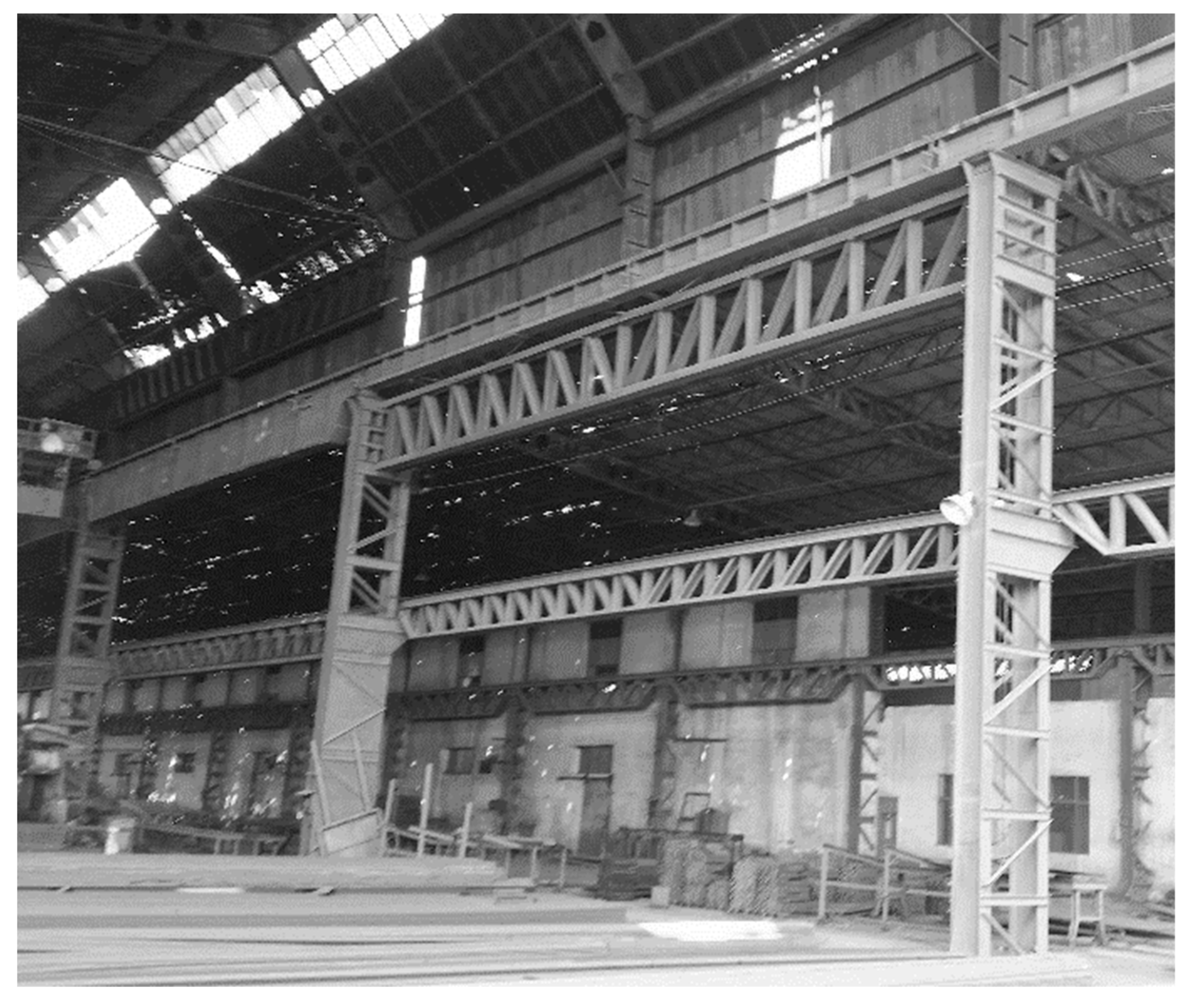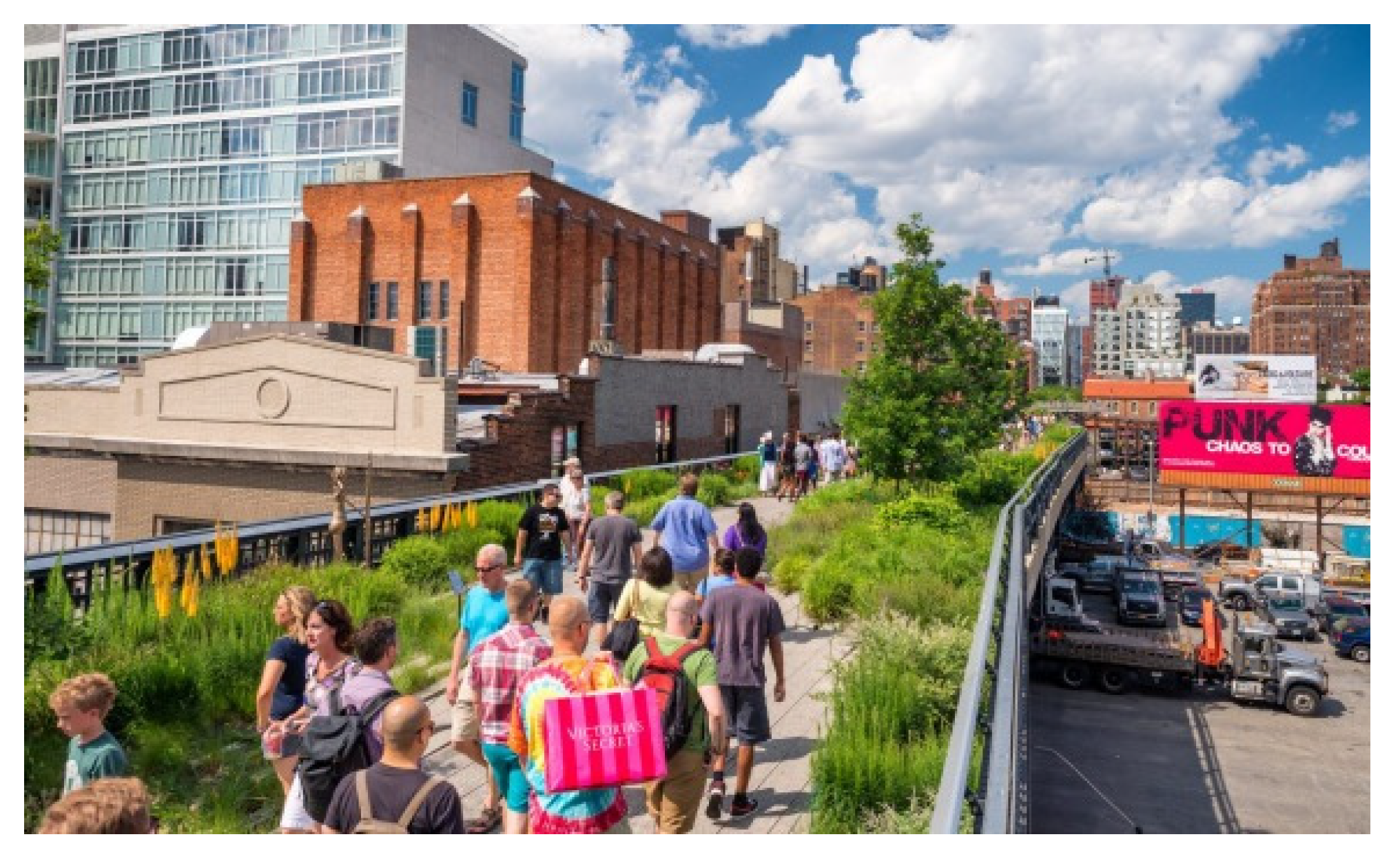Identification of Industrial Heritage and a Theoretical Framework for an Industrial Heritage Inventory System in Pakistan
Abstract
:1. Introduction
“Industrial heritage consists of the remains of industrial culture which are of historical, technological, social, architectural or scientific value. These remains consist of buildings and machinery, workshops, mills and factories, mines and sites for processing and refining, warehouses and stores, places where energy is generated, transmitted, and used, transport and all its infrastructure, as well as places used for social activities related to industry, such as housing, religious worship or education”.[3]
“a class structure in which individuals in different occupational systems also possess different economic and cultural capital and roughly differentiate between the dominant class (industrialists, executives), the working class (manual laborers, farmers), and the petty bourgeoisie as the overlapping class (small business owners, teachers, and others)”.[4]
- To identify specific industrial heritage sites, based on the definition provided in the “Nizhny Tagil Charter for the Industrial Heritage” [3].
- To propose a systematic process for developing an inventory for use in assessing the historical, architectural, and urban regeneration significance of industrial buildings in Pakistan.
Industrial Sites in Pakistan with Significant Heritage Value
2. Methodology for Documentation and Industrial Site Inventory in Pakistan
3. Industrial Heritage Inventory of Pakistan
3.1. Critical Derivation
3.2. Proposed Inventory
3.2.1. Step 1: Why and How?
- a
- Vision statement and purpose:
- Identification and protection of important industrial sites;
- Identification of suitable reuse for abandoned/underused heritage buildings;
- Conservation, management, and reintegration of important industrial sites in the community and in regional planning;
- Underscoring how these sites can best contribute to tourism and urban regeneration.
- b
- Scope of the inventory
- c
- Future use and upkeep of the inventory
3.2.2. Step 2: Analysis and Selection of Sites for the Inventory
- The date and name of the recorder;
- The current name of the place;
- The current and original functions of the place and other uses;
- The current and original owners of the site;
- The construction material of the buildings;
- The architectural style of the buildings;
- Any alteration, intervention, or subtraction from the site;
- The current physical condition of the site;
- Observations on current potential and threats;
- Comments on the local surroundings and geographical setting of the site;
- Photos from a variety of angles to show the current state of the buildings in the surroundings.
- (a)
- Evaluation of the data.
- Oral history;
- Site analysis;
- Document review;
- Map review;
- Reviews of newspapers and local history books;
- Examination of historical photographs, drawings, and paintings;
- Examination of building plans and architectural drawings.
3.2.3. Step 3: Industrial Site Inventory Record (ISIR)
3.2.4. Step 4: Eligibility Criteria
3.2.5. Other Characteristics That Can Be Considered When Assessing Suitability
3.2.6. Industrial Site Statement of Significance (Industrial Site SOS)
- (a)
- The building and its context.
- (b)
- Heritage value and integrity.
- (c)
- Important architectural elements.
3.2.7. Application of the Industrial Heritage Inventory Form
4. Findings and Discussion
5. Conclusions
Author Contributions
Funding
Institutional Review Board Statement
Informed Consent Statement
Data Availability Statement
Acknowledgments
Conflicts of Interest
References
- Claver, J.; García-Domínguez, A.; Sebastián, M.A. Multicriteria decision tool for sustainable reuse of industrial heritage into its urban and social environment. Case studies. Sustainability 2020, 12, 7430. [Google Scholar] [CrossRef]
- Akbar, S.H.; Iqbal, N.; van Cleempoel, K. Re-reading the heritage legislations of Pakistan. In Proceedings of the 7th International Conference on Heritage and Sustainable Development. Green Lines Bookseries on Heritage Studies, Coimbra, Portugal, 8–10 July 2020; Volume 1, pp. 3–10. [Google Scholar]
- TICCIH. The Nizhny Tagil Charter for the Industrial Heritage. 2003, p. 4. Available online: https://www.icomos.org/18thapril/2006/nizhny-tagil-charter-e.pdf (accessed on 7 November 2018).
- Bole, D. What is industrial culture anyway? Theoretical framing of the concept in economic geography. Geogr. Compass 2021, 15, e1259. [Google Scholar] [CrossRef]
- Zaidi, S.A. Issues in Pakistan’s Economy, 2nd ed.; Oxford University Press: Karachi, Pakistan, 2005. [Google Scholar]
- Pakistan Steel Mill. Pakistan Steel: Largest Industrial Complex of Pakistan. 2019. Available online: http://www.paksteel.com.pk/organ_our_history.html (accessed on 29 December 2021).
- Hasan, A.; Younus, M.; Zaidi, S.A. Understanding Karachi: Planning and Reform for the Future; City Press: Karachi, Pakistan, 1999. [Google Scholar]
- Iqbal, N.; Cleempoel, K.V. Adaptive Reuse & Regeneration as Potential for Industrial Sites in the Metropolitan Cities in Pakistan; Editorial Universitat Politècnica de València: Valencia, Spain, 2020; Volume 784–795, Available online: https://www.academia.edu/45514508/Adaptive_reuse_and_regeneration_as_potential_for_industrial_sites_in_the_metropolitan_cities_in_Pakistan (accessed on 26 May 2021).
- Raj, U.; Sinha, N.K.; Tewari, R. National-scale inventory and management of heritage sites and monuments: Advantages and challenges of using geospatial technology. Curr. Sci. 2017, 113, 1934–1947. [Google Scholar] [CrossRef]
- Legislation Giving Protection to Heritage Properties. ICOMOS Pakistan. 2020. Available online: https://www.neduet.edu.pk/arch_planning/ICOMOS/national_legislation.html (accessed on 7 July 2020).
- ICOMOS. Joint ICOMOS—TICCIH Principles for the Conservation of Industrial Heritage Sites, Structures, Areas and Landscapes. The Dublin Principles. 2011. Available online: https://www.icomos.org/images/DOCUMENTS/Charters/GA2011_ICOMOS_TICCIH_joint_principles_EN_FR_final_20120110.pdf (accessed on 19 November 2019).
- Robiglio, M.; Carter, D.K. RE-USA: 20 American Stories of Adaptive Reuse, a Toolkit for Post-Industrial Cities. Jovis Verlag GmbH. 2017. Available online: https://books.google.co.uk/books?id=HnyrAQAACAAJ (accessed on 18 November 2021).
- Condello, A.; Lehmann, S. (Eds.) Sustainable Lina: Lina Bo Bardi’s Adaptive Reuse Projects, 1st ed.; Springer: New York, NY, USA, 2016. [Google Scholar]
- Parks Canada. Standards and Guidelines for the Conservation of Historic places in Canada: A Federal, Provincial and Territorial Collaboration. Ottawa: Parks Canada. 2010. Available online: https://central.bac-lac.gc.ca/.item?id=R62-343-2010-eng&op=pdf&app=Library (accessed on 10 January 2022).
- Shah, K. Documentation and Cultural Heritage Inventories—Case of the Historic City of Ahmadabad. ISPRS Ann. Photogramm. Remote Sens. Spat. Inf. Sci. 2015, II-5/W3, 271–278. [Google Scholar] [CrossRef] [Green Version]
- Gupta, D. Identification and Documentation of Built Heritage in India: Process for Identification and Documentation of Cultural Heritage. INTACH (UK) Trust. 2007. Available online: https://books.google.be/books?id=L5JJQwAACAAJ (accessed on 25 December 2021).
- Ministry of Parks, Culture and Sports. Developing Your Heritage Inventory—A Guide for Communities. Heritage Resources Branch of the Ministry of Tourism, Parks, Culture and Sport. Available online: https://publications.saskatchewan.ca/#/products/84522 (accessed on 10 January 2022).
- Naeem, A. Inventory of historic places: A systematic method for their identification, evaluation and determining significance part I: Core data and inventory form. NED J. Res. Archit. Plan. 2011, 10, 1–23. [Google Scholar]
- Naeem, A. Inventory of historic places: A systematic method for their identification, evaluation and determining significance part II: Case studies. J. Res. Archit. Plan. 2011, 10, 24–34. [Google Scholar]
- Antiquities Act1975. Google Docs. 1992. Available online: https://drive.google.com/file/d/1_9d1YKRIJEytnJkl77DtzGXVKFp4EX6c/preview?usp=embed_facebook (accessed on 9 January 2020).
- Kalman, H. Heritage Planning: Principles and Process; Routledge: Oxford, UK, 2014. [Google Scholar]
- Chen, J.; Judd, B.; Hawken, S. Adaptive reuse of industrial heritage for cultural purposes in Beijing, Shanghai and Chongqing. Struct. Surv. 2016, 34, 331–350. [Google Scholar] [CrossRef]
- D’Monte, D. Mills for Sale: The Way Ahead; Marg Publications: Mumbai, India, 2006. [Google Scholar]
- Lee, R.; Barbé, D.; Fenk, A.-K.; Misselwitz, P. (Eds.) Things Don’t Really Exist Until You Give Them a Name: Unpacking Urban Heritage; Mkuki na Nyota: Dar es Salaam, Tanzania, 2017. [Google Scholar]
- FA and VCPD CTU in Prague, Industrial Topography. Available online: http://www.industrialnitopografie.cz/index2.php (accessed on 23 February 2022).













| No. | Profession | Date of Interview |
|---|---|---|
| 1 | Architect, heritage conservationist, Karachi | 29 January 2019 |
| 2 | Architect, social activist, Karachi | 9 January 2019 |
| 3 | Architect, Professor at NED Karachi University | 8 January 2019 |
| 4 | Architect, Professor at UMT Lahore | - |
| 5 | Architect, Professor at COMSATS Lahore | 6 February 2019 |
| 6 | Architect, Professor/Dean SAP UMT Lahore | - |
| 7 | Divisional superintendent of the Karachi Railway | 8 December 2020 |
| 8 | Architect, Professor at SUET Karachi | 7 January 2019 |
| 9 | Supervisor, Karachi Port, east wharf | 17 January 2020 |
| 10 | PRD Karachi Port Trust | 18 January 2020 |
| 11 | Former worker at the Port of Karachi | 19 January 2020 |
| 12 | Karachi Railways employee | 24 January 2020 |
| 13 | Port of Karachi chief marketing manager | 26 January 2020 |
| 14 | Karachi Railways employee | 26 January 2020 |
| 15 | Karachi Railways engineer | 26 January 2020 |
| 16 | Architect, president of IOCOMOS Pakistan | 3 February 2019 |
| Industrial Archaeology | Types | Value | |
|---|---|---|---|
| Documents | Processing | Machinery, workshops, mills, factories, sites for processing and refining | Historical |
| Artifacts | Manufacturing | Technological | |
| Structures | Storage | Warehouses, stores, storage areas (locally known as godowns) | Social |
| Human settlements | Transportation | Railways, bridges, stations, aqueducts, canals | Architectural |
| Urban landscape | Infrastructure | Scientific | |
| Social activities structures | Housing, religious buildings, markets, education | ||
| S.NO. | Canada | India | Proposed for Pakistan |
|---|---|---|---|
| 01 | Description | Significance | Building and Context |
| 02 | Heritage Value | Integrity | Heritage Value and Integrity |
| 03 | Character-Defining elements | Context | Important Architectural Elements |
| No. | Name | Construction Date | City | Location Coordinates |
|---|---|---|---|---|
| 1 | Cantonment Railway Station | 1864 | Karachi | 24.843971453221542, 67.0411928471272 |
| 2 | Pakistan Steel Mills (PSM) | 1981 | Karachi | 24.8123350120352, 67.34213825133841 |
| 3 | Karachi Port Trust storage areas (locally known as godowns) | - | Karachi | 24.84649190727869, 66.99837385263066 |
| 4 | Mughalpura Railway Workshop | 1861 | Lahore | 31.56398662976902, 74.36476164188643 |
| 5 | Pakistan Engineering Company (PECO) | 1947 | Lahore | 31.451241225015515, 74.33053041990523 |
| 6 | Golra Sharif Railway Station | 1881 | Islamabad | 33.67059000501834, 72.9476278330179 |
Publisher’s Note: MDPI stays neutral with regard to jurisdictional claims in published maps and institutional affiliations. |
© 2022 by the authors. Licensee MDPI, Basel, Switzerland. This article is an open access article distributed under the terms and conditions of the Creative Commons Attribution (CC BY) license (https://creativecommons.org/licenses/by/4.0/).
Share and Cite
Iqbal, N.; Akbar, S.H.; Van Cleempoel, K. Identification of Industrial Heritage and a Theoretical Framework for an Industrial Heritage Inventory System in Pakistan. Sustainability 2022, 14, 5797. https://doi.org/10.3390/su14105797
Iqbal N, Akbar SH, Van Cleempoel K. Identification of Industrial Heritage and a Theoretical Framework for an Industrial Heritage Inventory System in Pakistan. Sustainability. 2022; 14(10):5797. https://doi.org/10.3390/su14105797
Chicago/Turabian StyleIqbal, Naveed, Syed Hamid Akbar, and Koenraad Van Cleempoel. 2022. "Identification of Industrial Heritage and a Theoretical Framework for an Industrial Heritage Inventory System in Pakistan" Sustainability 14, no. 10: 5797. https://doi.org/10.3390/su14105797
APA StyleIqbal, N., Akbar, S. H., & Van Cleempoel, K. (2022). Identification of Industrial Heritage and a Theoretical Framework for an Industrial Heritage Inventory System in Pakistan. Sustainability, 14(10), 5797. https://doi.org/10.3390/su14105797








